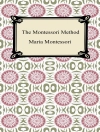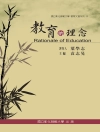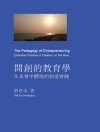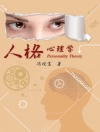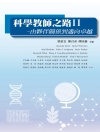Literacy Assessment and Instructional Strategies prepares literacy educators to conduct reading and writing assessments and develop appropriate corrective literacy strategies for use with their grade K–5 students. Connecting Common Core Literacy Learning Standards to effective strategies and creative activities, the book includes authentic literacy assessments and formal evaluations to support reading teaching in the elementary classroom. Initial chapters discuss literacy assessment and evaluation, data-driven instruction, high-stakes testing, and instructional shifts in teaching reading, while later chapters focus on the latest instructional and assessment shifts, including pre-assessing literacy knowledge bases, using informational texts for vocabulary development, and close reading of text. Written by reading practitioners and researchers, this book is a must-have for novices as well as for veteran classroom teachers who want to stay on top of changing literacy trends.
Tabella dei contenuti
Preface
Acknowledgments
Section I. Foundations of Literacy Assessment and Instruction
Chapter 1. Building Teacher Knowledge for Literacy Assessment, Evaluation, and Measurement
Chapter 2. Literacy Background Knowledge and Assessment
Chapter 3. Students Who Struggle With Literacy Learning
Chapter 4. Student Factors Impacting Assessment
Chapter 5. Setting the Stage for Literacy Assessment Through Affective Measures
Section II. Grade-Level Literacy Assessments
Chapter 6. Early Childhood-Level Assessments: Breaking the Code
Chapter 7. Early Childhood Grade-Level Assessments: Spelling, Vocabulary, Fluency, Comprehension, and Writing
Chapter 8. Intermediate Grade-Level (3-6) Assessments and Strategies
Chapter 9. Informal Reading Inventories
Chapter 10. Reading Commercial Screening and Diagnostic Assessments
Chapter 11. Planning for Interventions
Section III. Designing Instructional Strategies Based on Students′ Needs
Chapter 12. Phonemic Awareness, Phonics, and Word Work Strategies and Assessments
Chapter 13. Comprehension and Writing Strategies
Chapter 14. Strategies for Fluency Through Reading
Section IV. Connecting Readers to Texts
Chapter 15. Connecting Kids to Texts
Chapter 16. Assessing New Literacies and Media Literacies
Appendix A. International Reading Association Standards for Reading Professionals
Appendix B. Common Core State Standards, State Assessments
Glossary
References
Index
About the Authors
About the Contributors
Circa l’autore
Dr. Sandra Golden – Dr. Golden has been in higher education since 1988 and her involvement in community development and engagement spans 20 years. Prior to joining the Sisters of Charity Foundation of Cleveland as Associate Director of Cleveland Central Promise Neighborhood she taught for seven years at Defiance College. She also provided administrative leadership as the Associate Provost of Graduate Studies and Professional Development. While at Defiance College, Dr. Golden earned tenure and was promoted to Full Professor of Education. Prior to joining the faculty of Defiance College, she also taught for seven years at Notre Dame College of Ohio in their teacher education program and provided administrative leadership for the graduate programs. Dr. Golden has 15 years of experience as a teacher educator and literacy educator. Her research interest includes culturally relevant pedagogy, reading and literacy development, and teacher education. She has written several book chapters and articles and is the co-editor of Connecting the literacy puzzle: Linking the professional, personal, and social literacies, 2012, Hampton Press. Currently, she is the managing editor of the American Reading Forum Annual Yearbook. She is also the co-founder and director of T-RUTH Academy for Young Adolescent Girls, a reading and writing program to support young girls in developing and enhancing reading and writing skills, promoting self-awareness and self-esteem, and engaging in service learning and project development.


